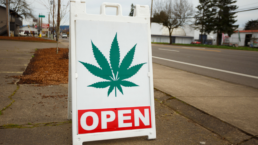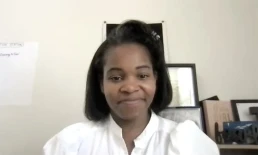To date, over 16,000 Oregon residents have already accessed services funded by Measure 110.
By Alexander Lekhtman, Filter
February 1 marks the one-year anniversary since Measure 110 took effect in Oregon, decriminalizing low-level drug possession and increasing funding for harm reduction, substance use disorder treatment and other key services.
According to information shared with Filter by the Drug Policy Alliance, there were 60 percent fewer total drug arrests in state over the 10 months after February 1, 2021, compared with the same period the previous year. That 2020 period saw 9,100 drug arrests in total—meaning a reduction of almost 5,500 arrests. However, the data do not yet show the extent to which this decline was attributable to Measure 110.

Measure 110 also requires that a portion of cannabis tax revenue be put into a special fund to expand services for people who use drugs. Before the measure passed, Oregon ranked near the bottom of all US states for access to substance use disorder (SUD) treatment.
Thanks to the measure, the state has already paid out over $31.4 million to providers of services including treatment, harm reduction, peer support, and housing and employment support. Governor Kate Brown had initially wanted to delay payments until July 2022, but advocates told Filter that they successfully fought to get this money paid out early, helping to keep critical services running.
To date, over 16,000 Oregon residents have accessed services funded by Measure 110.
In the meantime, the state has received, and has been reviewing, funding requests from providers all over Oregon. From mid-February, the state will be paying out another estimated $302 million to help every county create a “behavioral health resource network.” This should entail a coordinated, one-stop system where each county’s service providers will work together to make it as easy as possible for people to get the care they need.
Recent Posts
These Veterans Starved Themselves To Protest The War In Gaza
July 8, 2025
Take Action Now As food in Gaza becomes increasingly scarce, activists are pushing their bodies to the limit in solidarity.By Emmet Fraizer, The…
ICE Agents Are Terrorizing Los Angeles With Brutal Tactics
July 8, 2025
Take Action Now ICE agents have established a pattern of brutal use of force in immigration raids.By Jonah Valdez, The InterceptSince June 6,…
Talk World Radio: India Walton On Zohran Mamdani And Freezing Out ICE
July 7, 2025
Take Action Now India Walton, former Democrat nominee for mayor of Buffalo, NY, discusses Zohran Mamdani and the race for NYC mayor and how to deal…
How Climate Change Is Worsening Flooding And Heavy Rainfall
July 7, 2025
Take Action Now The latest science on the link between climate change and natural disasters — and how they may be playing out where you live.By…




